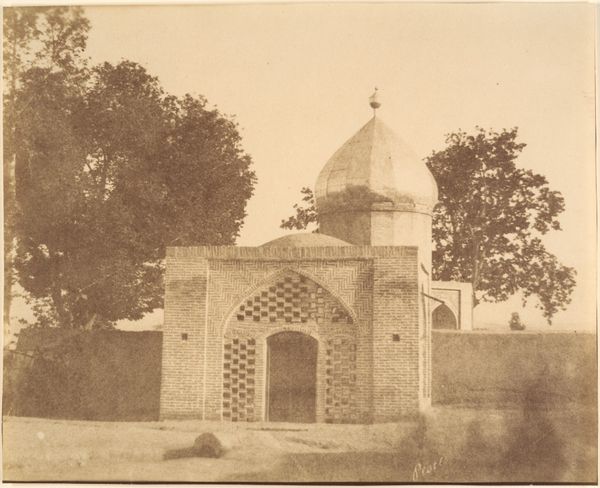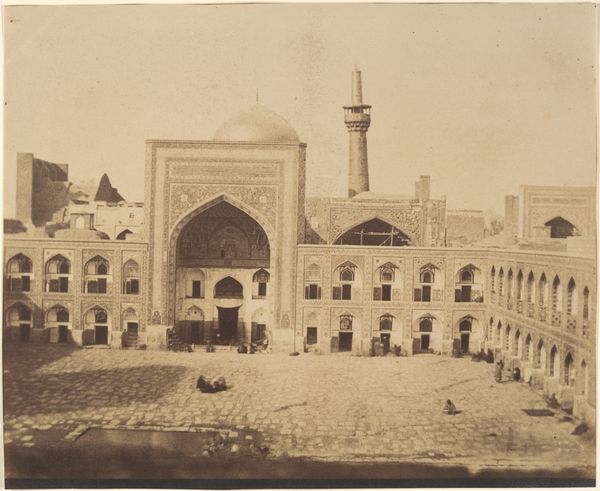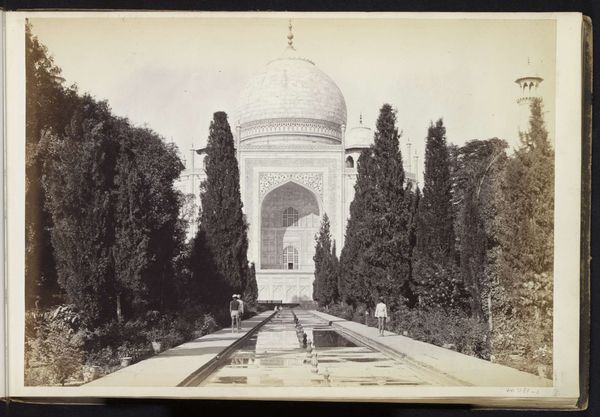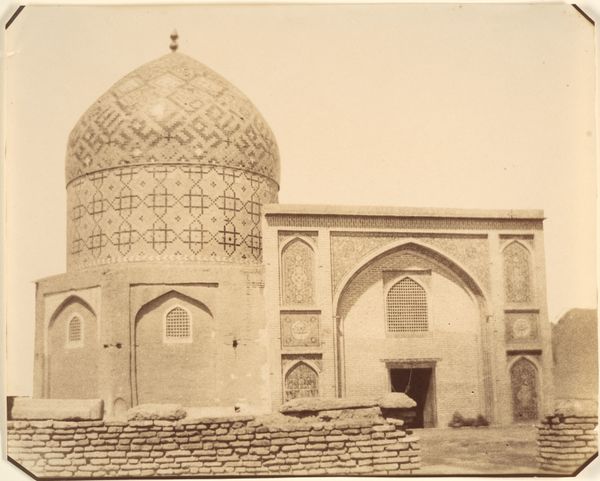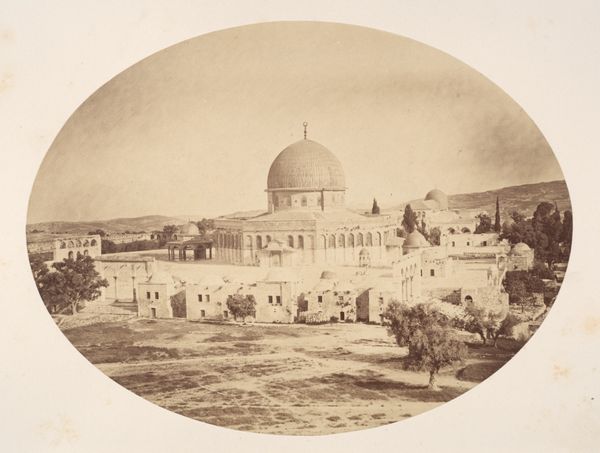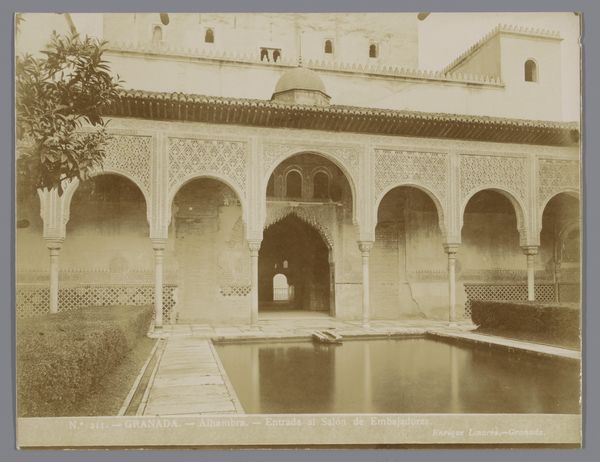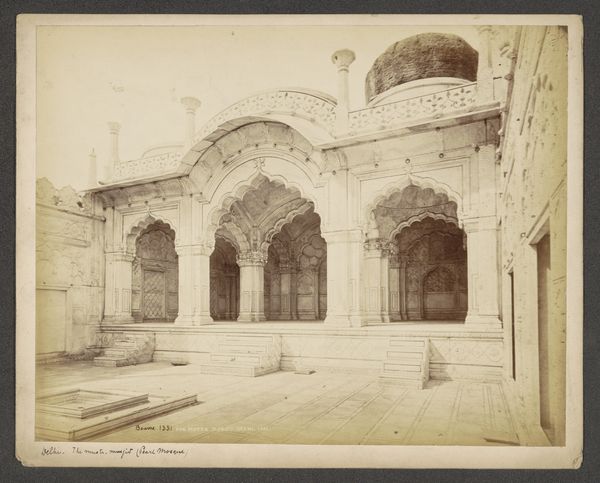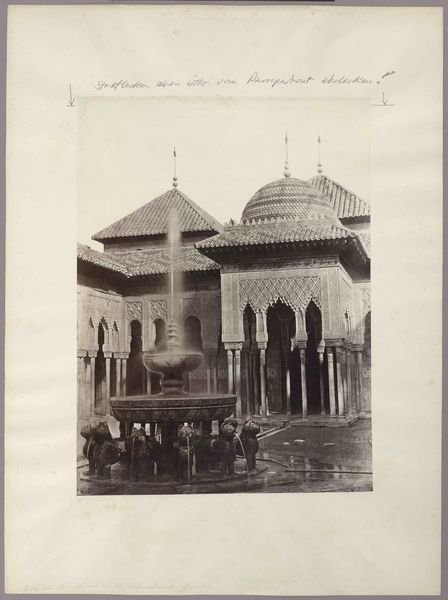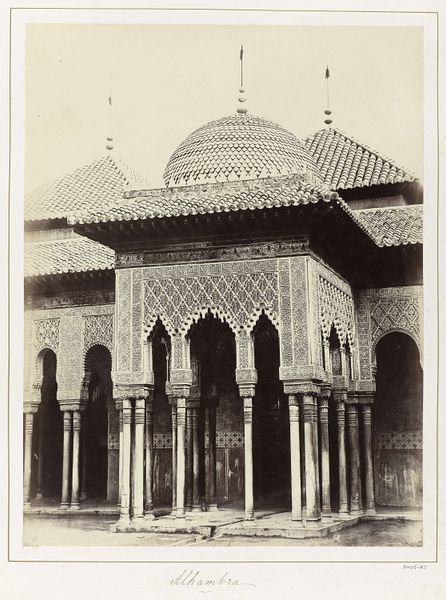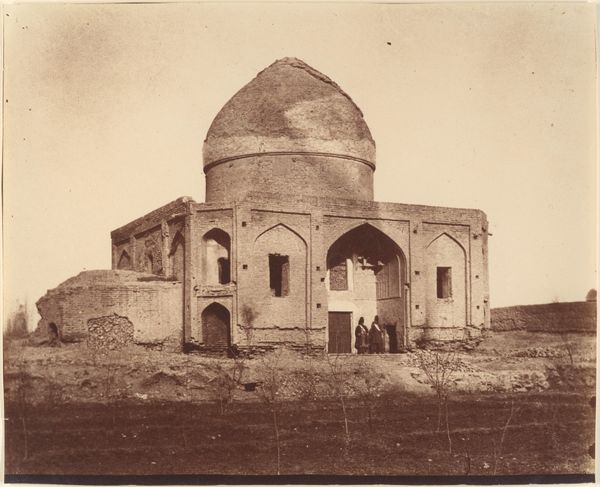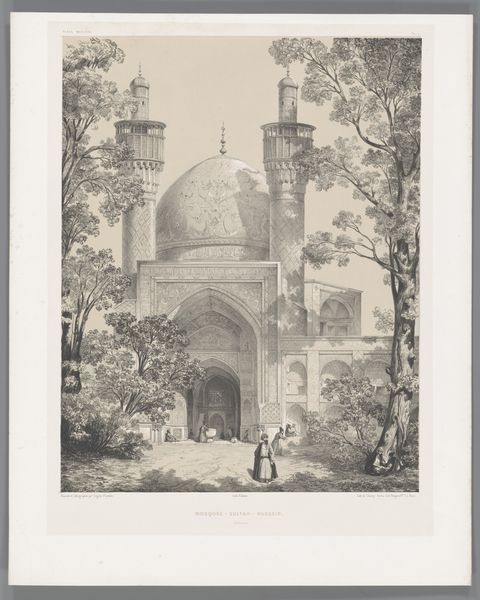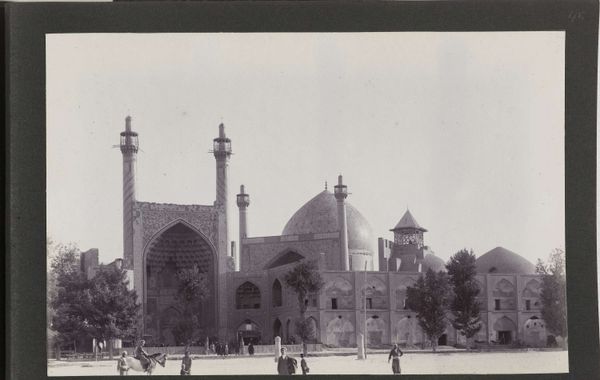
#
aged paper
#
photo restoration
#
colourisation
#
archive photography
#
historical photography
#
old-timey
#
fading type
#
19th century
#
historical font
#
columned text
Dimensions: height 117 mm, width 196 mm
Copyright: Rijks Museum: Open Domain
Curator: The photograph before us, taken by Antoine Sevruguin, captures the Agha Bozorg Mosque in Kashan sometime between 1880 and 1895. Editor: Immediately, I’m struck by the material weight of this image. The tones evoke a strong sense of age, decay even. The faded sepia and the delicate paper surface give a real sense of temporal distance. Curator: Exactly. Sevruguin operated a commercial photography studio in Tehran during a period of significant social and political change. These photographs, though often commissioned by Europeans, became a crucial visual record. Consider the physical act of producing these images – the preparation of glass plates, the lengthy exposure times… Editor: Yes, the production chain matters. But look how these images were then disseminated – sold as commodities, collected as ethnographic records, or displayed as orientalist fantasies. How do we interpret their historical purpose? And even question its modern appeal as something nostalgic? Curator: That commercial context is vital. He was not simply an artist but a businessman, responding to a demand, and, more broadly, feeding Europe's growing appetite for images of the East. Notice how Sevruguin meticulously staged his photographs. Consider the positioning of figures; it becomes evident in this particular shot. The subjects lined up on the water banks look staged, almost like a procession, ready for display and judgement. Editor: And it certainly raises the issue of representation – who had access to these images and the narratives they constructed about Persian society? Think about the role of museums and galleries in perpetuating particular visions of other cultures. Curator: Absolutely, these images offer a complex negotiation of identity. However, examining his broader body of work highlights his technical mastery within the constraints of the wet collodion process, while also showing a very western aesthetic viewpoint that impacted not only the content but also the distribution method for an exotic population far removed from the everyday life of the viewer. Editor: This photo gives rise to so many considerations, especially as historical objects with powerful impacts that go way beyond aesthetic appreciation. Curator: Indeed. By paying attention to materials and production, we start to understand the social impact these images hold.
Comments
No comments
Be the first to comment and join the conversation on the ultimate creative platform.
